Student Notable
Tools Award
Core77 Design Awards 2023
Fibercuit: DIY Aesthetically Pleasing, Flexible, and Kirigami Circuits
Throughout the 1990s, the "clear craze" introduced a slew of highly popular and aesthetically pleasing electronics with see-through designs that visually exposed the circuit boards and inner mechanisms used in the devices. Despite transparency, the appreciation for the exposure of complex engineering, specifically printed circuit boards (PCBs) in this case, plays an important role in the success of these products. From a design perspective, we are huge fans of designs that let the inner workings shine through. However, we see little effort in finding new ways of presenting the beauty of engineering after the fad. We wonder if we can elevate the aesthetics of engineering to a different level. What if, along the same lines as the clear craze, the circuit boards served more than just functionalities? What if they are not flat and rectangle-shaped? What if the circuit itself is the artifact, possessing unique form factors?
In Fibercuit, we delve into a suite of custom circuit designs, from extremely small flexible ones to larger rigid ones folded into kirigami forms, each of which allows for a novel design tangent while maintaining the circuitry functionality. To achieve the versatile outcome, we repurposed a fiber laser engraver, typically used to engrave metal (such as a user's signature on the iPad's back), to work on a substrate made from commercially available materials. We believe this novel approach to PCB fabrication will be of use to the design and maker communities at large, not only in terms of expanding design vocabulary and providing toolkits, but also by generating fresh ideas for presenting the aesthetic value of engineering alongside its functionalities.

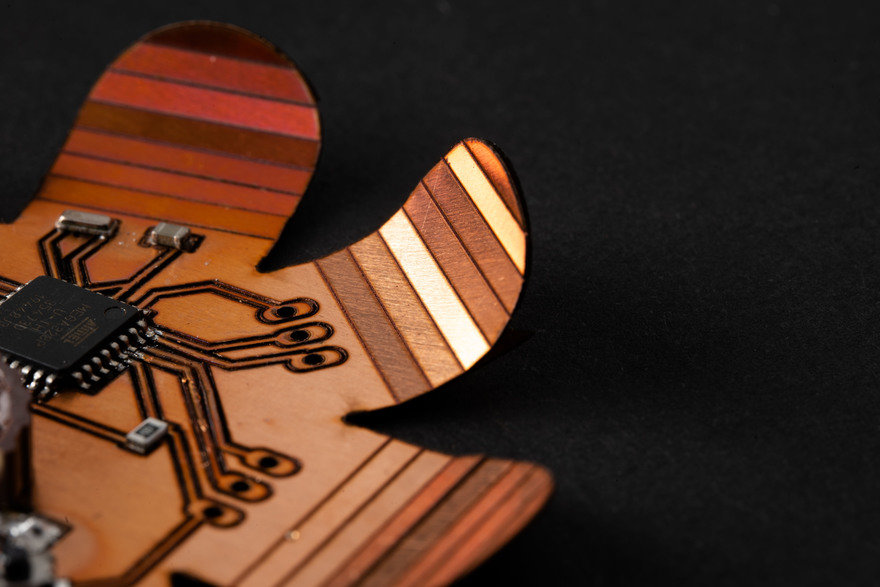
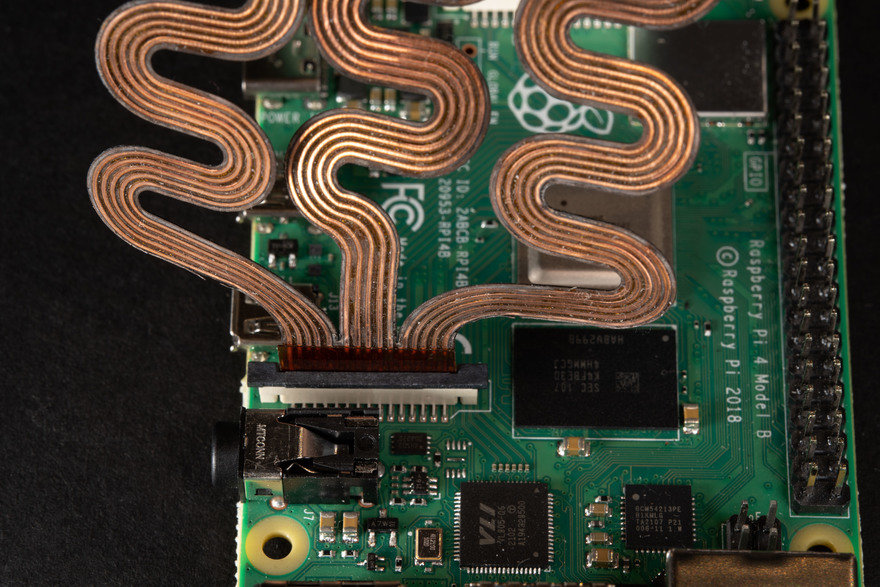

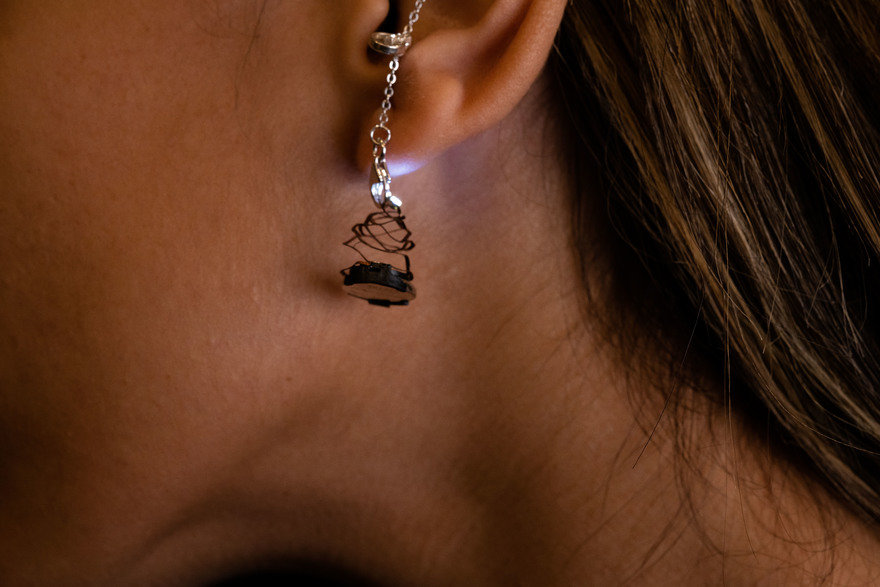
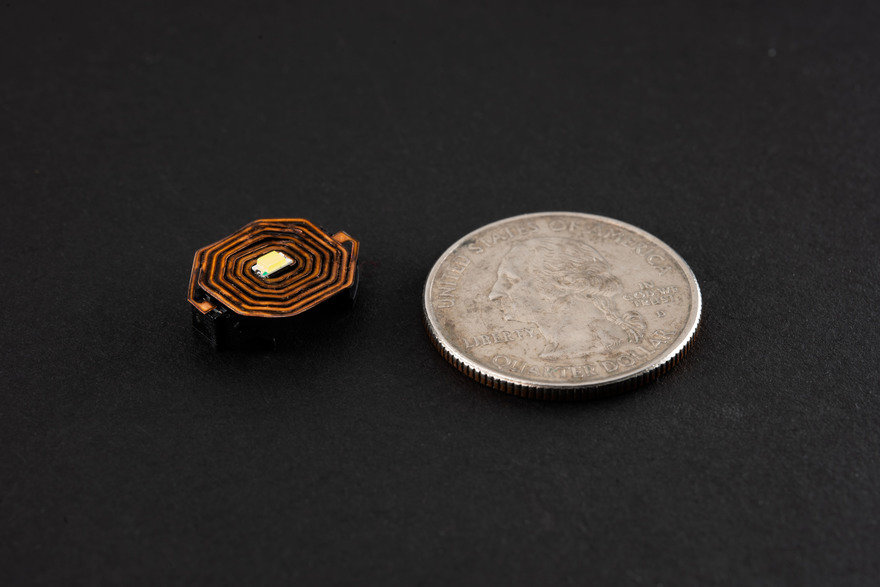


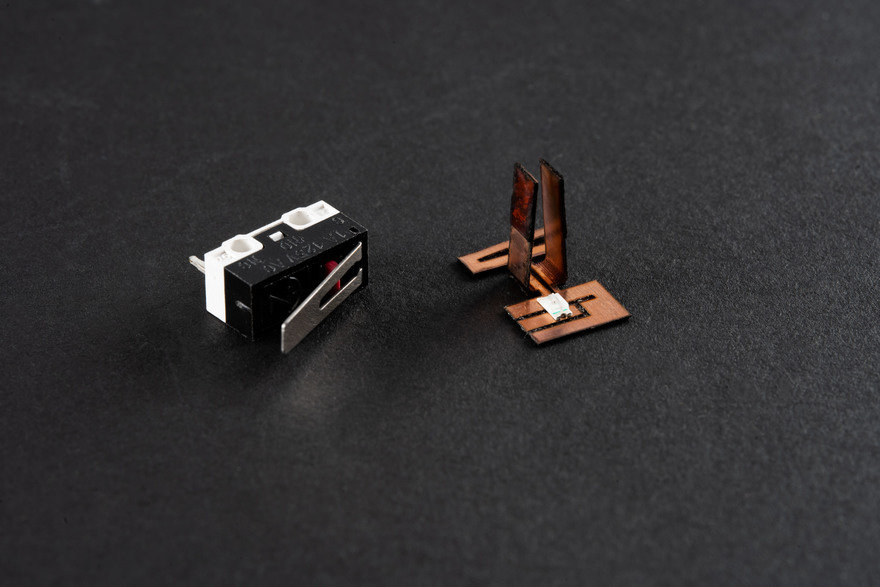

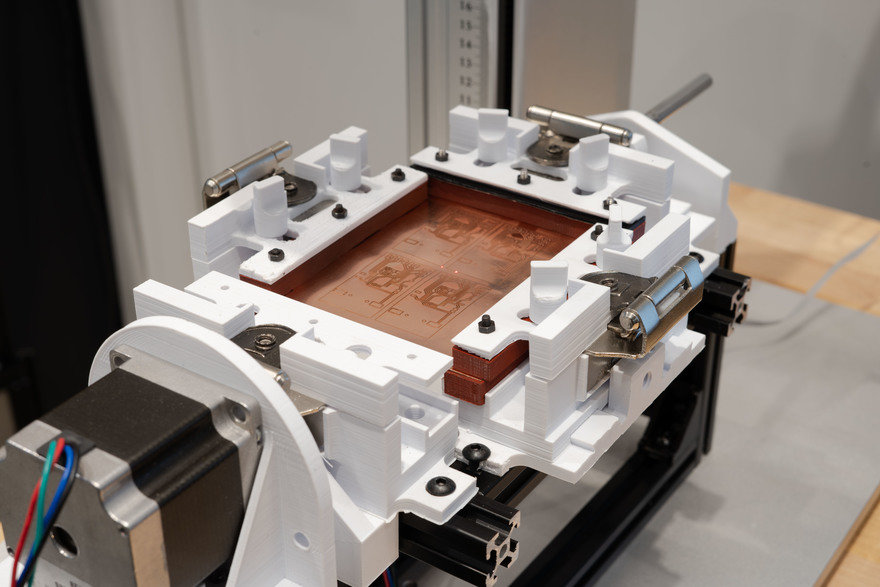
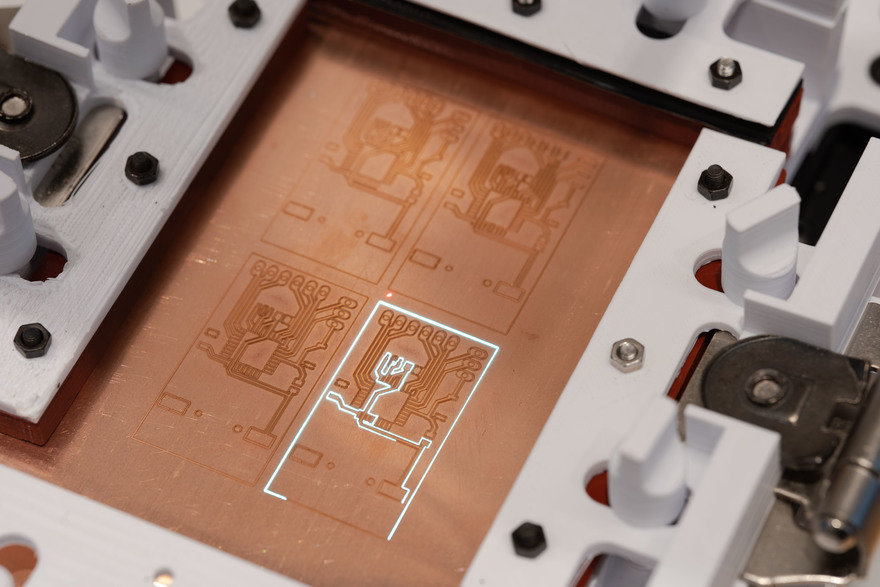
We implemented several archetypes that combine interesting form factors with electronics. The kirigami crane was made by selectively cutting and folding a piece of a circuit. The outcome assembles an origami crane while carrying a functional circuit that lights up the LEDs with a coin cell battery. Along the same lines, the earring features a similar circuit but on a more miniature scale. The dome shape is formed by gravity pulling down on the battery and dragging the flexible traces into place. More complex circuits can also be integrated. For example, the "Sunflower" features a chipset equivalent to an Arduino – a very popular prototyping microcontroller. The dice is equipped with the same chipset that controls the randomization of the LEDs located on the opposite side of the chip in a double-layer PCB configuration. Furthermore, we took advantage of being able to make complex formfactor PCBs and made them move, which can't be realized with conventional materials and fabrication methods. The butterfly flaps its wings when an AC current is applied to the coil-shaped traces, which become an electromagnet that reacts to the static magnet underneath them iteratively. The replica of a click switch, which is commonly used on 3D printers and door sensors, is another perfect example of how unconventionally shaped PCBs by themselves can already achieve sensing or actuation purposes that previously required a combination of a mechanical structure and circuitry.
To make all of the above possible, the team developed a suite of fabrication techniques revolving around a fiber laser cutter. The machine is a comparably cheap version of the industrial ones used for engraving metal and other hard materials. Its wavelength makes it a perfect fit for our material substrate: a composite of copper sheet and Kapton tape. The two materials come in sheets, and are pressed and glued together with the silicon adhesive that comes with the Kapton tape. The copper sheet is used as conductors for traces and soldering pads. And the Kapton tape, which is known for its good heat and electric insulation, is used as a holder of the circuit and insulation between conductors that should not be shorted. The circuit traces are made by selectively removing the copper sheet in the areas that are not needed, leaving the Kapton layer unharmed. The seams between the desired and undesired copper areas are engraved with calibrated laser settings for easy removal.
Besides circuit traces, we employed different laser settings for bending circuits with different thicknesses. The bending effect happens cumulatively across multiple passes of low-energy engravings. Each pass creates a small, uneven microstructure deformation at the crease location. This effect is also quantified and can be controlled by our custom-made software. Using the crane as an example, our software takes the 2D design with specifications for bending crease geometry and angles and parses them into control parameters to drive the machine. The making process is known as "one-off" in the field of digital fabrication, meaning the entire process is automated without manual interference.
The project was first published as an academic paper in October 2022 at UIST '22: Proceedings of the 35th Annual ACM Symposium on User Interface Software and Technology, in Bend, Oregon. During the demonstration session, Fibercuit received the People's Best Demo Award for UIST 2022. Following the publication, a series of media outlets, including All3DP, Hackaday, Hackster.io, etc., covered the Fibercuit techniques and the idea of 3D circuits. The Fibercuit outcome is described to be "visually spectacular and extraordinarily unique in terms of form factor, size, stiffness, and malleability" by All3DP. Additionally, the project was recently invited as part of the speaker lineup at the Open Hardware Summit 2023.
Core77 Design Awards 2023
- A/V & Photography Equipment
- Apps & Platforms
- Branding & Identity
- Built Environment
- Commercial Equipment
- Consumer Technology
- Design for Social Impact
- Emerging Technologies
- Furniture & Lighting
- Gaming Accessories
- Health & Wellness
- Home & Living
- Interaction
- Lifestyle Accessories
- Packaging
- Robotics
- Speculative Design
- Sports & Outdoors
- Sustainability
- Tools
- Toys & Play
- Transportation
- Visual Communication